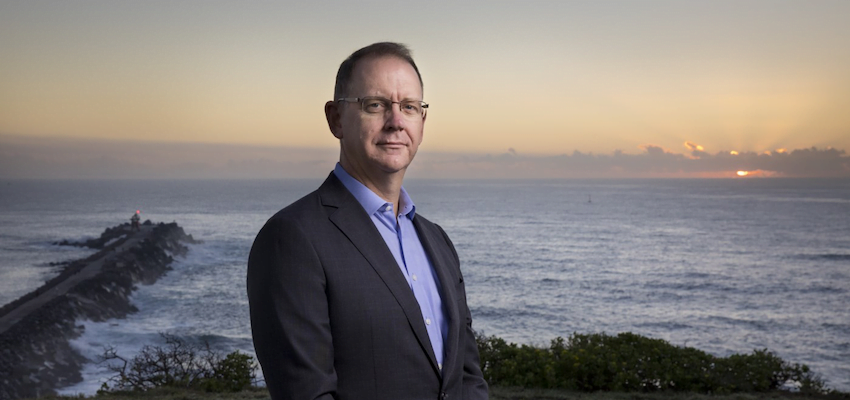IMPLICATIONS of the global move away from coal were addressed by Port of Newcastle CEO Craig Carmody during this week’s Maritime Industry Australia conference in Sydney.
Mr Carmody, who heads the world’s biggest coal port, said he took the top job about a year ago to help the port in transitioning to “something else”, while adding this did not mean the port was “rejecting coal”.
“It represents 86% of our revenue… we believe that coal will continue to be a staple at the Port of Newcastle for some time to come but where the rest of the world is making plans for the transition to alternative energy, we are lagging a bit behind in Australia,” Mr Carmody said.
“We don’t know when the transition will happen but as a company we have be ready before it does.”
Mr Carmody also spoke of plans to build an ultra-large vessel container facility at Newcastle.
“The best infrastructure is the stuff that is built before you need it,” he said.
“And anybody who lives in Sydney knows that every time we rush to build a road or a bridge or a tunnel usually the day it’s opened it’s already full.
“I would argue with the changes going on in the shipping world, there will be a cascading effect on the larger vessels into the Australian trade and if we actually have somewhere for them to call, we’ll probably start getting them.”
He also addressed the issue of rail and port connectivity.
“We have papers, we have glossy brochures, we have speeches. What we don’t have is new dedicated freight rail connected to ports,” he said.
Port of Newcastle is fortunate to have heavy rail connected to the port system but the problem for capital city ports is creating dedicated freight lines in cities.
Australia is not the only country grappling with the issue. Governments in China and New Zealand have indicated that ports in Hong Kong and Auckland may be moved. In Long Beach California, the government has closed down a highway and is replacing it with freight rail to keep open the gateway for Asian trade in the US through the port.
“Until people start realising that Australia’s trade is 99% moved by ships… and dedicated rail is what is needed for productivity and efficiency as we move into the next generation, nothing will change,” Mr Carmody said.
“I spent years in politics… maritime doesn’t get you a single vote. Australia is one of the weirdest countries as an island nation where nobody cares about shipping.”
The business model that the Port of Newcastle has pursued is that of a “passive landlord”, according to Mr Carmody, where it “counts ships coming up and down the channel, we charge them for it”.
“That is not the business model we are pursuing at the Port of Newcastle anymore. Over the next five years, we will be building infrastructure and not just the container terminal,” he said.
“We are actively involving ourselves in the logistics and supply chain in our region.”
The port is working with the councils of Narrabri and Moree to assist them in getting state and federal government support to build intermodal terminals.
“Their intermodals will connect to the Port of Newcastle Container Terminal,” Mr Carmody said. “It’s good for their farmers, it’s good for the region and ultimately will be good for our business.”
The port also has a strategy known as “Port, Park, City” which addresses how the port integrates into the city of Newcastle.
“What we’re seeking to do by using supply chain touchpoints is to partner or create strategic alliances,” he said.
The port is involved in a number of projects involving solar and wind energy, hydrogen and liquefied natural gas.
“We’re in discussions with the South Koreans on hydrogen and LNG… that all works out well for our Port, Park, City model.
“Our view is if we back all these different types of alternative energy plays… we’ve decided to back all of them and we’ll see which one sticks,” he said, adding that the market hasn’t determined what the next major energy source will be because it is predominantly a societal decision.
“We’ve decided to lean in, we are going to be a leader in this space,” Mr Carmody said.
“We shouldn’t always wait for government to help us out… when you’re the world’s largest coal port, I don’t really think we have the luxury to sit there and say ‘she’ll be right, something will come along’”.
He made the point that all ports in Australia, government-owned or private, are essentially owned by the public.
“All private ports are actually just leased. Certainly at the Port of Newcastle, we are reminded every day that the community has a very strong view about the future of the port and what the port is doing for the region,” he said.

